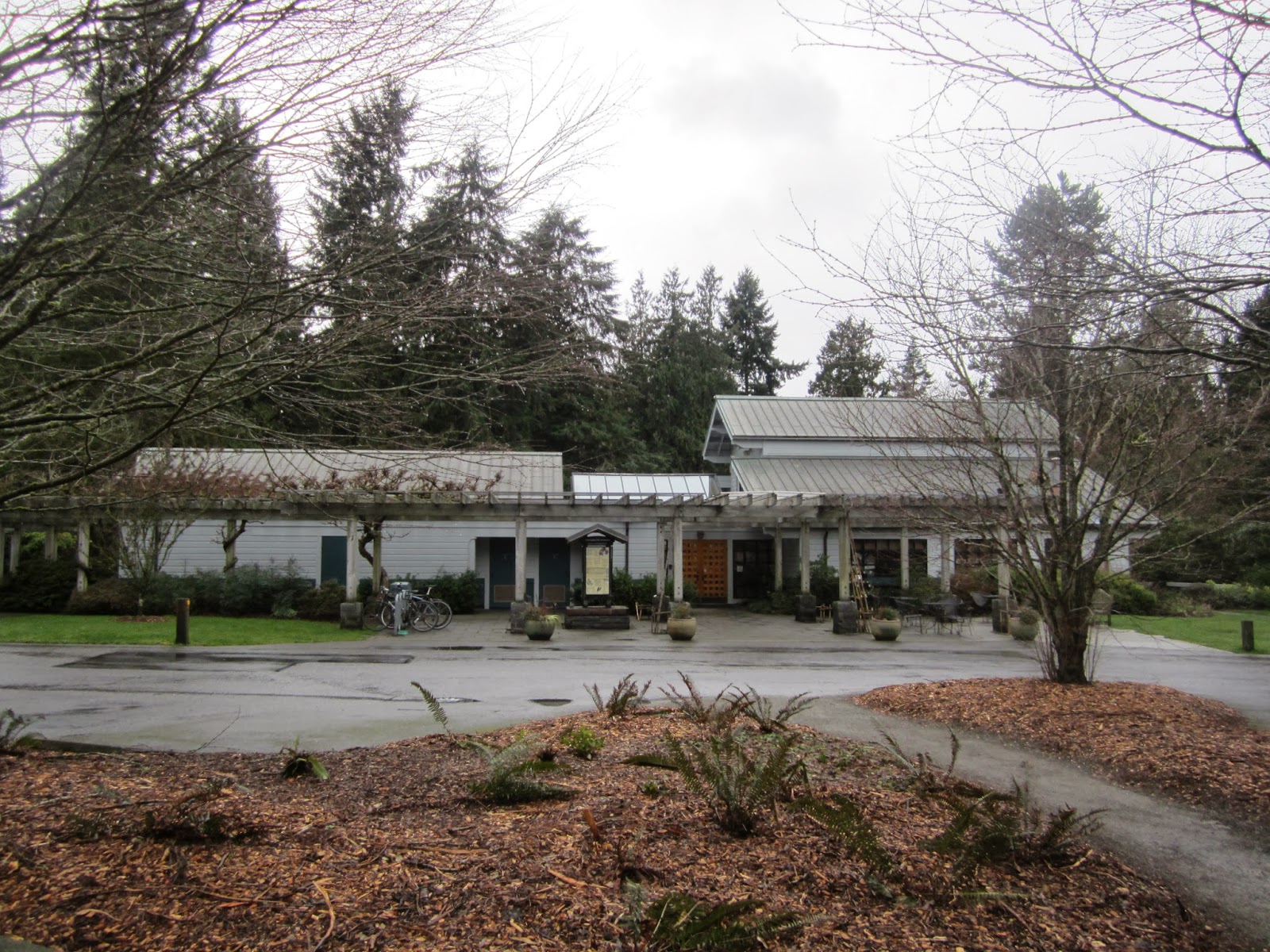The office and visitor center for the Arboretum
It is a month or so too early for most of the plants to be in full bloom but the Washington Park Arboretum in Seattle, sometimes referred to as the University of Washington Arboretum, does have some winter blooming azaleas, rhododendrons, Canterbury Bells, Cyclamen, and a few early spring flowers like camellias, crocus and daffodils so rain notwithstanding we took a walk through the gardens yesterday. Yes, there were puddles of water on the paths and mud too but it was a lovely walk and the flowers we enjoyed were sparkling with drops of water.
One of the first plants in flower that we saw was this pink azalea, a smaller member of the rhododendron family. Rhododendrons are native to this area and grow wild although these plants have been cultivated. They come in several different colors such as this lavender pink and the red below.
I found this flowering tree interesting with all the spiny yellow petals. It is a Chinese Witch Hazel.
I think these are Canterbury bells, pictured below. They are a popular ground cover and there were several different colors of these flowers planted in various places throughout the park.
Also found in places were these Snowdrops that are sometimes also called Star of Bethlehem. They are tiny with delicate flowers and grow well in shady areas.
Type of Cyclamen
Daffodils
Heather and rhododendron
Crocus
Snow berry
Tall Oregon Grape just beginning to bloom
There is an entire section devoted to camellias, all different colors, single petal, doubles, and more. Many of these plants are very old.
The most recent addition to the park is the exhibit of plants from New Zealand. There is an informational kiosk explaining what has been planted, the similarities between the climates in different places around the globe, and why certain plants are growing in the Arboretum.
In another section of the park a fence had been installed around a small grove of trees. These trees are redwoods and sequoias. The fence around them is to protect the roots that are close to the surface and somewhat fragile.
The spindly branches grow out from the trunk and the needles are unlike most evergreen trees that grow in this area.
In 1896 the land where the Arboretum now stands was logged before it became Washington Park (Washington Arboretum Park) in 1906. In 1924 the University joined with the city to maintain and preserve the park. Most of the big old trees in the park today are the result of re-seeding from the original trees; however, other trees have been planted also to provide a variety of different species in the park. Today there are many benches throughout the park where one can sit and enjoy the beautiful trees and plants.
There are trees of different shapes like this Japanese Maple and others that had strange bark patterns.
And brightly colored grass
The Works Progress Administration (WPA) must have made part of the
improvements to the park in the 1930s as evidenced by the seal we found
embedded in the walkway. We do plan to go back in a few months to see
other plants in bloom.






























No comments:
Post a Comment